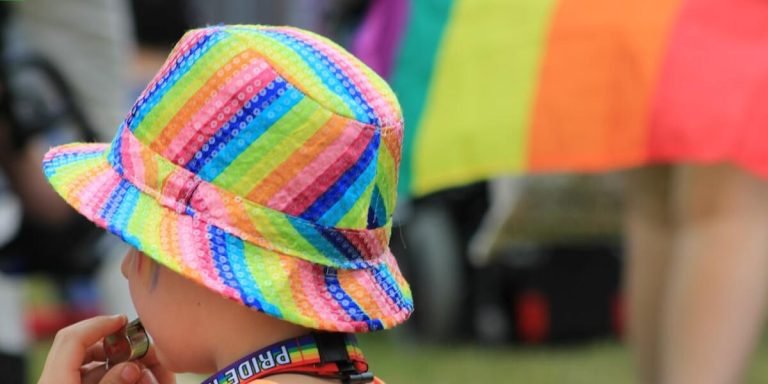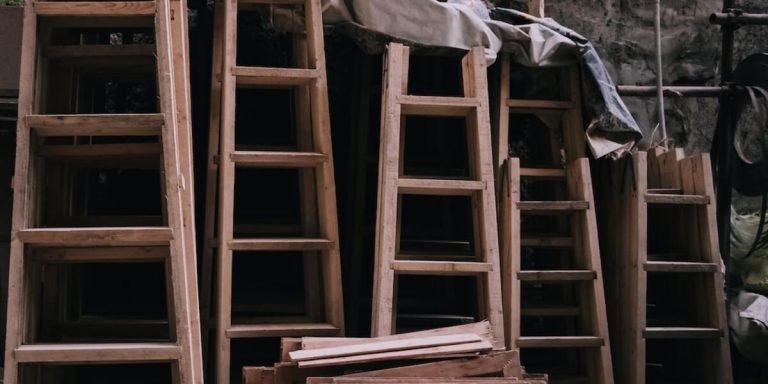What is SLD: A Comprehensive Guide to Specific Learning Disabilities in Children
Understanding specific learning disabilities (SLDs) in children can be a complex task for parents and educators. The question often arises – “What is SLD?” It’s important to know that every child learns at their own pace, but when consistent academic underachievement becomes noticeable despite effective teaching strategies, it may indicate the presence of an SLD.
In this comprehensive guide, we will delve deeper into what constitutes Specific Learning Disabilities. While focusing on how they affect a child’s education process and growth, our aim here is to provide special education resources and support tailored specifically towards managing these challenges efficiently. By understanding more about various types of SLDs in detail, you’ll gain insight into ways to help children with such difficulties thrive academically.
Did you know?
Did you know that Specific Learning Disabilities (SLDs) affect approximately 5% to 9% of school-aged children, making it the most common learning disorder? Yet, it often goes unrecognized due to its subtle and diverse symptoms.
Understanding Specific Learning Disabilities (SLD)
Understanding Specific Learning Disabilities, often referred to as SLD, is a crucial part of fostering inclusive education. As we embrace the era’s digital advancements in 2023, technology integration has become increasingly pertinent in diagnosing and aiding children with SLD. Thanks to these innovations, it’s becoming easier for educators and parents alike to facilitate adaptive learning environments that respond effectively to individual needs.
SLD refers to a group of neurodevelopmental disorders that affect how an individual learns certain skills such as reading or writing. It doesn’t indicate inferior intelligence; rather this condition impacts specific areas like memory processing or attention span which can hinder academic growth if not addressed properly. But today’s technological tools have made it possible for us professionals within childhood education sector – both teachers and parents –to better understand learning struggles regardless their complexity.
Through various Special Education Resources available now more than ever before due to rapid enhancements in EdTech industry—it’s no longer about ‘fitting’ each child into prescribed ways of teaching but adapting educational methodologies around them! With thoughtful application of suitable tech-tools designed specifically considering risks associated with prolonged screen-time or cyber safety issues at tender ages- there are endless possibilities ahead!
Furthermore, support systems created online by fellow care-givers offer platforms where shared experiences foster collective knowledge thereby constructively influencing general perception towards special-needs learners—who were otherwise misunderstood many times.
Defining SLD: Characteristics and Diagnosis
“Specific Learning Disability, also known as SLD, is a term used within the educational realm to denote disorders that affect a child’s ability to understand or use spoken or written language. These could surface in reading, writing, listening and speaking activities.
So what exactly is SLD? It’s an umbrella term covering different types of learning issues related to various areas such as comprehension skills and processing information. A few main characteristics set kids with these challenges apart: inconsistent school performance; notable discrepancy between their intelligence level (usually average or above) and academic achievement; persistent struggles in understanding concepts despite targeted efforts from parents/educators.
Now we come across Technology Integration – recognized globally due its pivotal role improving education quality overall & specifically students diagnosed with Specific Learning Disabilities. Technology offers innovative tools simplifying complex learning processes making it more engaging thereby helping children overcome barriers caused by disabilities!
Navigating the Educational Landscape for Students with SLD
Navigating the educational landscape for students with Specific Learning Disabilities (SLD) might seem like a daunting journey for parents and educators. However, when adequately equipped with understanding about what SLD is and its implications in education, this path can be navigated efficiently.
The first step towards effectively educating children with SLD includes proper identification of their unique needs. This requires comprehensive assessments by a team of qualified professionals such as school psychologists or special education teachers who validate these needs based on standard criteria. Post-identification begins the stage of planning individualized strategies tailored to meet these personalized requirements which broadly aligns within two categories: Special Education Resources and Technology Integration.
Special Education Resources primarily encompass specialized teaching methods emphasizing multi-sensory instruction – engaging multiple senses via auditory, visual and kinesthetic mediums simultaneously increasing engagement, enhancing memory retention thereby improving overall learning outcomes significantly.
Tailoring Instructional Strategies for SLD Support
In the realm of special education, Specific Learning Disability (SLD) is a term that resonates significantly. It refers to a group of disorders where children struggle with specific academic skills such as reading, writing, or math. Tailoring instructional strategies for SLD support involves carefully curated approaches designed to meet individual learning needs.
Specific attention to technology integration when strategizing for SLD support can be immensely beneficial. By creating engaging digital content across various platforms educators help stimulate interest amongst learners struggling acadically due their disability thereby increasing retention comprehension rates perceptibly . This handy tool also equips teachers more versatility adaptability whilst teaching making them better equipped tailor lessons accordingly based on student’s strengths weaknesses hence fostering inclusive environment all students regardless their personal challenges.
Employing Multisensory Teaching Techniques
The advent of technology in today’s educational landscape has brought about a significant transformation, particularly for students with Specific Learning Disabilities (SLD). If you’re struggling to understand what is SLD, it refers to disorders that interfere with the basic learning processes involved in understanding or using either spoken or written language. These difficulties manifest themselves as challenges related to listening, reading comprehension and even mathematical calculations.
In this vein of thought comes multisensory teaching techniques – an inclusive instructional strategy aimed at accommodating different types of learners by engaging all senses simultaneously. The logic behind this method stems from various research findings which suggest children often remember information more effectively through active engagement involving multiple senses.
Technology provides numerous avenues for employing these multisensory approaches:
1) Audio-Visual Tools: Using videos or animations can promote better grasp of abstract concepts while appealing to visual and auditory learners.
2) Interactive Whiteboards: Incorporating interactive whiteboard technology within classrooms allows teachers’ instructions become dynamic — text can be augmented with sound effects; diagrams may be enhanced via 3-Dimensional views thereby catering both tactile/kinesthetic and spatial intelligence.
Customizing Individual Education Plans (IEP)
An Individual Education Plan (IEP), is a crucial tool in delivering personalized education methods for youngsters with Specific Learning Disabilities, also known as SLD. As we delve deeper into 2023, the pressing question remains – “What is SLD?” The answer lies beyond just understanding it; embracing and implementing strategies to cater its needs forms the crux of this issue.
SLD refers to a variety of issues like dyslexia or attention-deficit hyperactivity disorder that leads to significant challenges in learning specific skills such as reading, writing or mathematics. Our focus must be on showcasing how technology can be integrated within educational platforms and systems.
Audio-books are another resourceful way by making information accessible through auditory means rather than relying entirely on printed material.This helps foster better engagement while promoting ease-of-understanding among students experiencing difficulties in traditional reading exercises.
Accessing Resources and Accommodations for SLD
In today’s technological era, the utilization of resources and accommodations for students with Specific Learning Disabilities (SLD) has become an integral part of their educational journey. Technology integration in education can play a pivotal role in ensuring that SLD children have access to appropriate learning tools and are able to overcome any barriers which might prevent them from reaching their full academic potential.
E-learning platforms, digital textbooks, and custom-designed apps offer personalized instruction strategies aimed at meeting the unique needs of these learners. There is now a deeper understanding within the educational community regarding how such resources can greatly enhance independent study capabilities among SLD pupils; as well as promote inclusivity by presenting various means through which they may engage actively with peers during collaborative projects.
Specialized tech-based solutions have become more available, prompting educators and parents to take on greater responsibility. They must ensure they implement proper instructional adjustments or modifications when teaching complex concepts with advanced methodologies. It’s also vital to continuously support the effective incorporation of these technology-driven interventions into daily classroom practices, creating enriching experiences that stimulate cognitive development for all students, particularly those with Special Learning Disabilities.
Identifying Assistive Technologies to Aid Learning
Being aware of what is SLD – Specific Learning Disabilities, paves the way towards a more inclusive learning environment. It empowers us to leverage assistive technologies and resources that aid in the learning process. This article will delve into how these tools can be identified and effectively integrated.
Let’s discuss prominent methods to identify useful technology applications designed specifically to support children with SLDs (Specific Learning Disabilities):
1. **Educational Software Applications**: Modern educational software offer features like speech-to-text or text-to-speech options which significantly enhance communication skills among kids coping with language-based disabilities.
2. **Assistive Devices**: These include specialized keyboards or mice that are tailored according to specific physical needs; providing ease-of-access functionalities crucial in overcoming certain motor-skills related challenges.
3.**Online Platforms For Special Needs Education:** In 2023, numerous online platforms have emerged catering exclusively towards special education requirements by offering custom-tailored content suitable for various types of learners.
5***Adaptive Learning Systems:* Employing artificial intelligence (AI) allows adaptive learning systems to personalize lessons based on individual’s strengths and weaknesses thereby fostering better understanding along their unique pace & style.
Leveraging Community and Online Support Networks
As we navigate the educational journey for children with specific learning disabilities (SLD), understanding what is SLD and leveraging community and online support networks can be a game-changer. In 2023, these resources are more prevalent than ever thanks to advances in technology integration in education.
Online platforms provide an array of opportunities for parents, educators, and students dealing with SLD. These platforms often offer detailed guides on identifying signs of learning difficulties as well as strategies to overcome them. They not only inform about what is SLD but also help us familiarize ourselves with common accommodations that can ensure success in both classroom settings and daily life activities.
Community involvement forms another significant aspect when accessing special education resources. Local libraries, parent-teacher associations, study groups – all contribute towards creating inclusive environments tailored to meet diverse learning needs.
Understanding how one child’s experience differs from another is crucial too! Online forums allow exchange of experiences among individuals who are navigating similar challenges across geographies – providing invaluable insights on personalized coping mechanisms beyond formalized academic assistance or therapeutic aids.
We must remember digital literacy plays a pivotal role while using such network supports effectively. Therefore, ensuring regular training sessions regarding usage safety & optimizing search results could prove highly beneficial.
Lastly keeping up-to-date information outreach essential so every individual has access irrespective their background or technological proficiency barrier existing there enabling fuller participation within our society at large being absolute key here!
Conclusion
As we wrap up our exploration into “what is SLD”, it’s crucial to remember that every child has unique strengths and weaknesses. Understanding the nuances of Specific Learning Disabilities equips us with tools and strategies to better support children in their learning journey, promoting inclusivity.
Don’t forget, navigating childhood education doesn’t have to be a solo voyage. Our website serves as your compass – whether you’re an educator seeking effective teaching methods or a parent looking for guidance. Consider browsing through our wide range of resources on educating children and general support for parents and educators alike – because together, we can make learning accessible for all!







